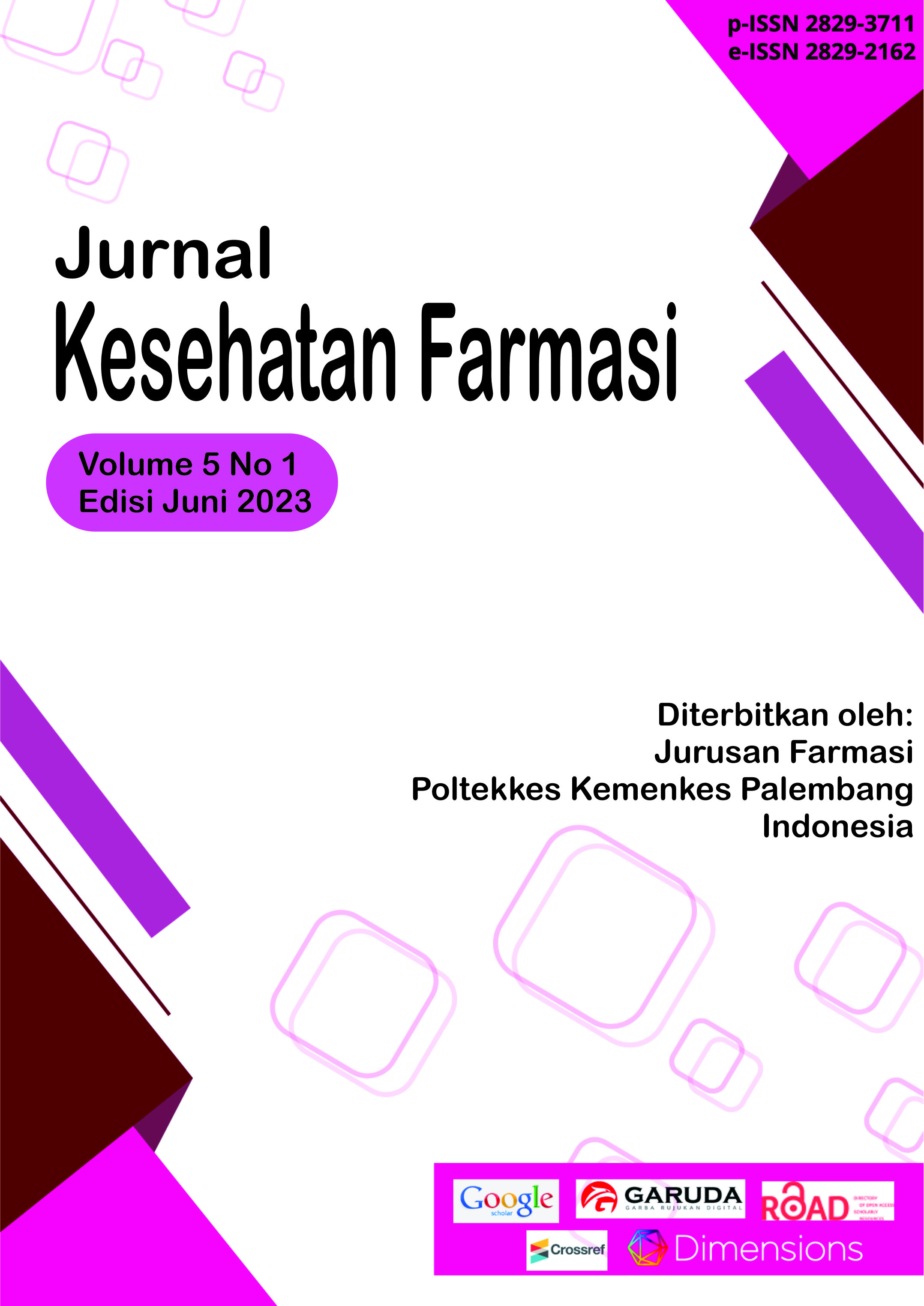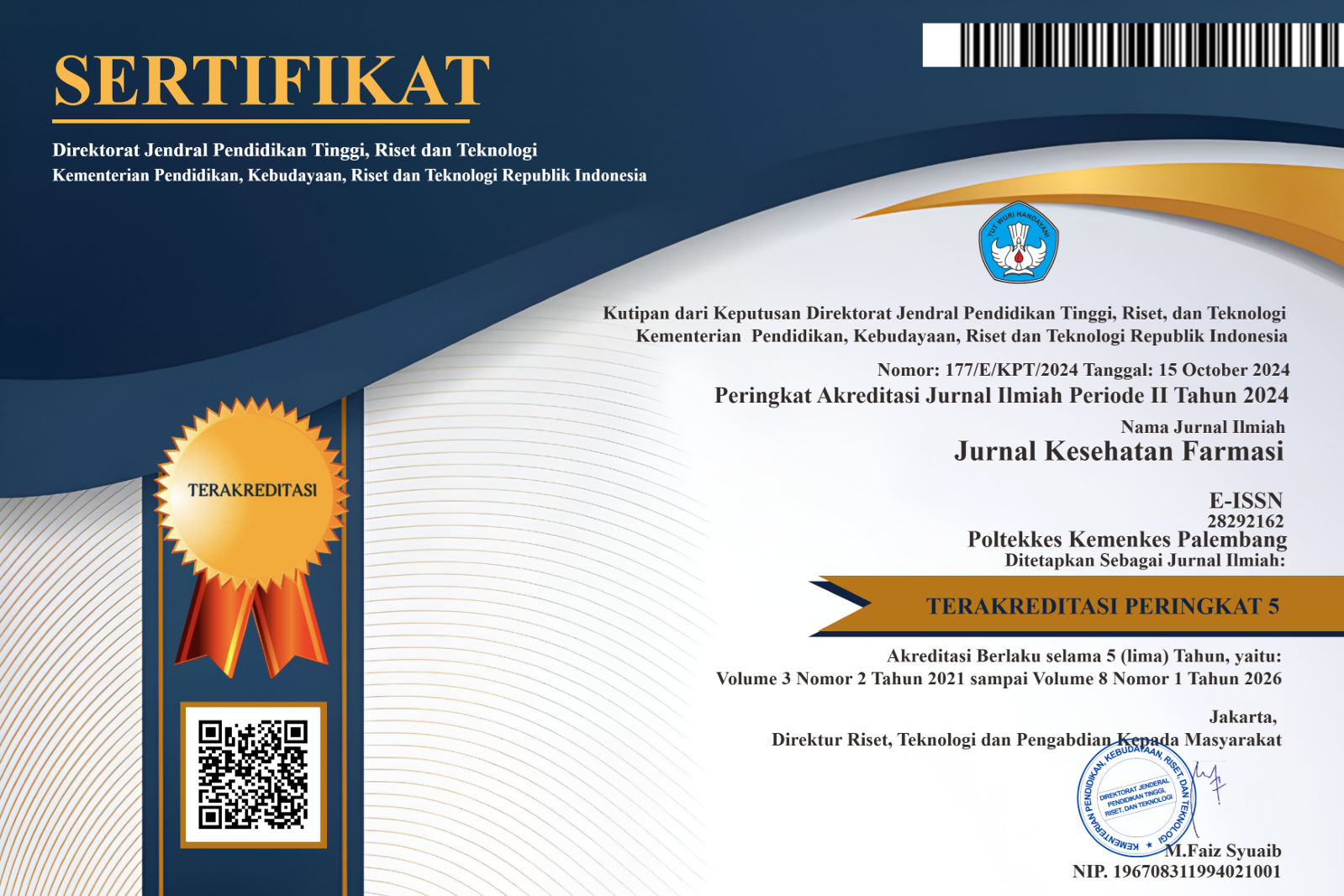Formulasi Sabun Padat dari Biji Kopi Arabika (Coffea arabica L.) Kerinci
Abstract
Background: Kerinci coffee that is grown in the traditional way and gets a coffee stamp that applies a sustainable process. The caffeine content in coffee is an antioxidant that can prevent premature aging of the skin, is able to remove dead skin cells, smooth the skin, provide nutrition to the skin, eliminate body odor, remove acne scars and provide protection against ultraviolet rays. This study aims to obtain a good solid soap formula from Kerinci Arabica Coffee.
Methods: Solid soap is made by the cold process method using a mixture of fatty oils and sodium hydroxide as the basic ingredients. The fatty oil used is a mixture of olive oil and coconut oil (Formula I/FI) and a mixture of olive oil and VCO (Formula II/FII).
Results: Both formulas show good results in the form of solid, coffee-scented, milk chocolate color (FI) dark milk chocolate FII, FI soap has hard texture and FII has soft. The results of the test for water content FI = 11.3% and FII = 10.45%, the conditions according to SNI are less than 15%. The pH of FI soap is 9 and FII is 10, the pH test for 4 weeks shows a stable curve.
Conclusion: Kerinci arabica coffee can be formulated into solid soap and meets the requirements for water content and pH
Copyright (c) 2023 Jurnal Kesehatan Farmasi

This work is licensed under a Creative Commons Attribution-ShareAlike 4.0 International License.
Authors who publish with this journal agree to the following terms:
- Authors retain copyright and grant the journal right of first publication with the work simultaneously licensed under a Creative Commons Attribution License that allows others to share the work with an acknowledgement of the work's authorship and initial publication in this journal.
- Authors are able to enter into separate, additional contractual arrangements for the non-exclusive distribution of the journal's published version of the work (e.g., post it to an institutional repository or publish it in a book), with an acknowledgement of its initial publication in this journal.
- Authors are permitted and encouraged to post their work online (e.g., in institutional repositories or on their website) prior to and during the submission process, as it can lead to productive exchanges, as well as earlier and greater citation of published work














